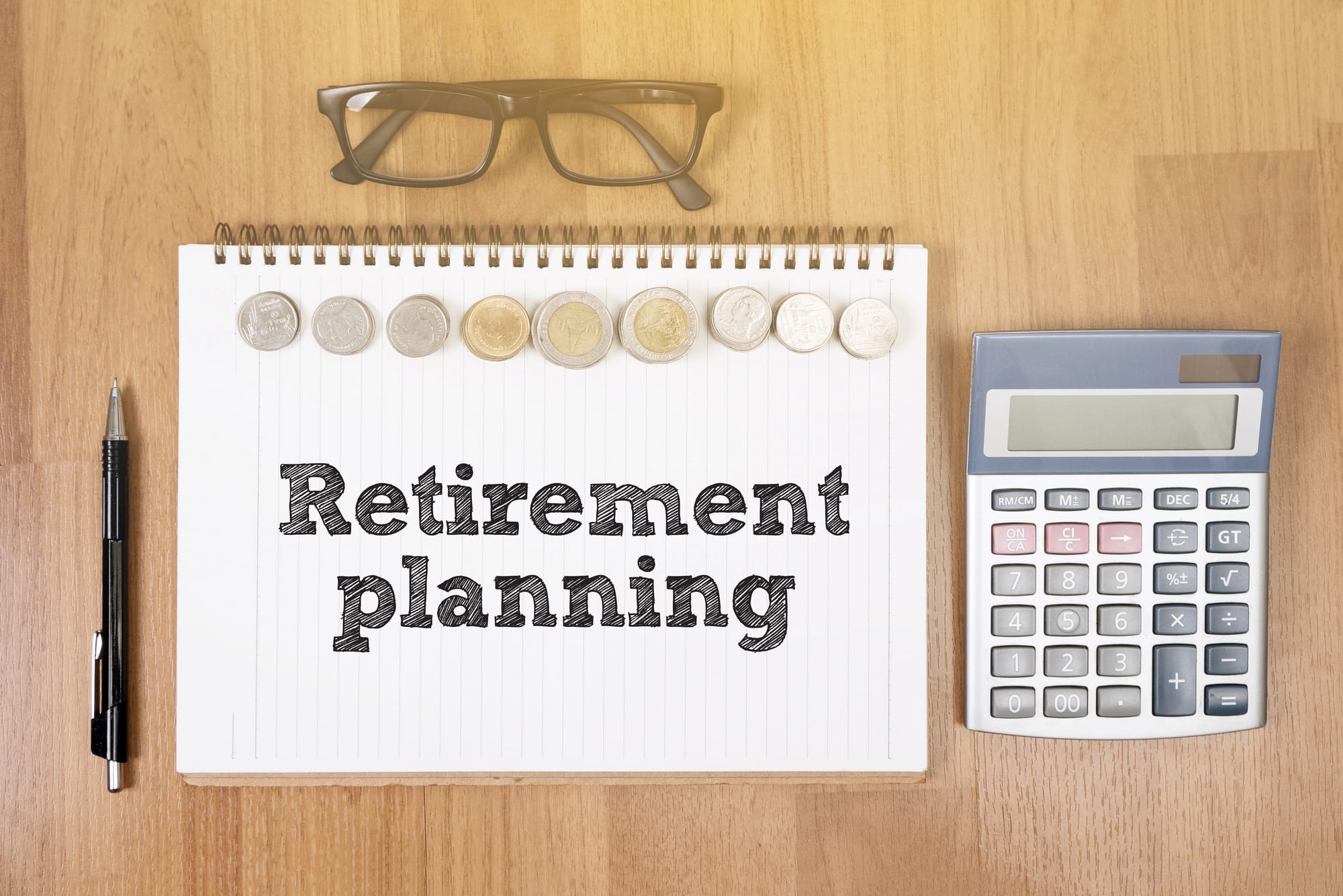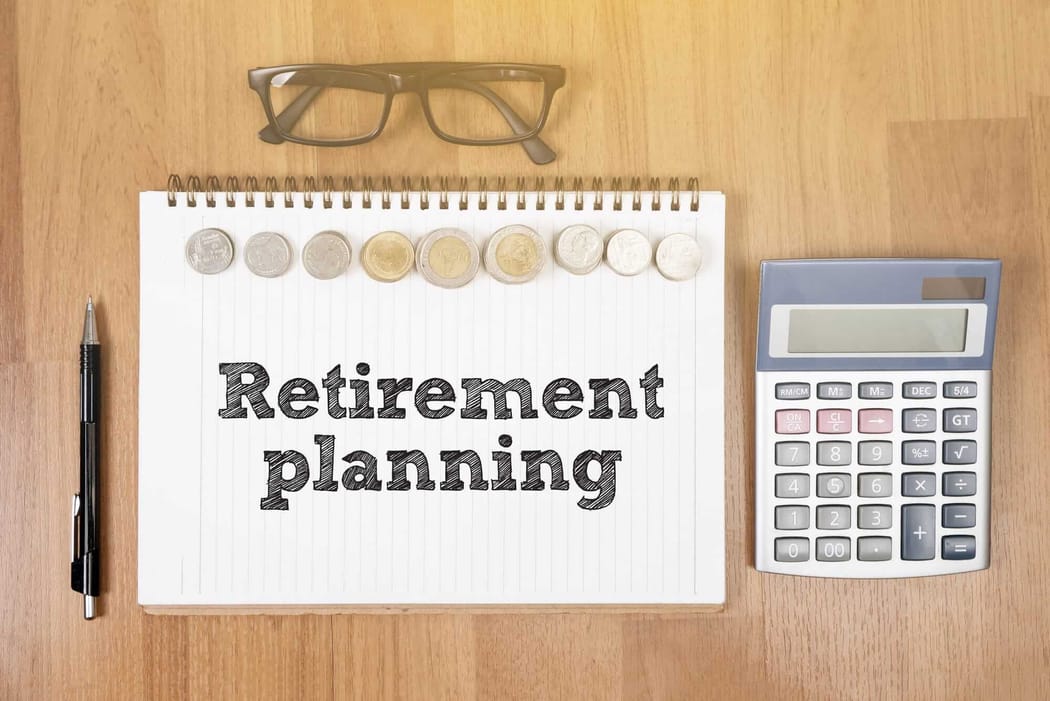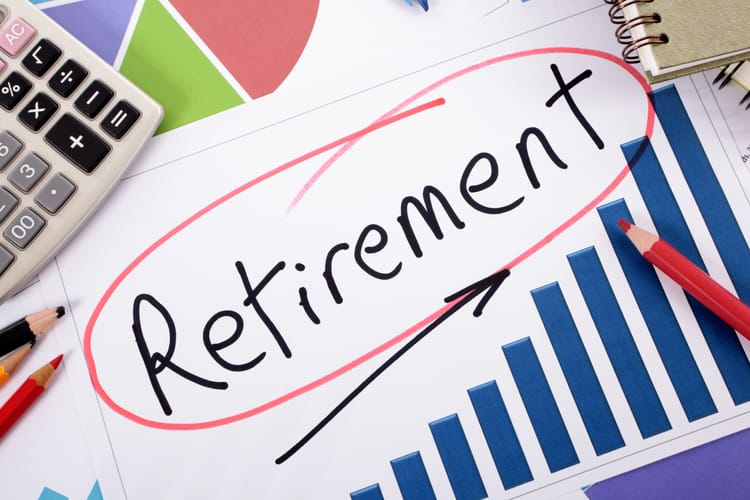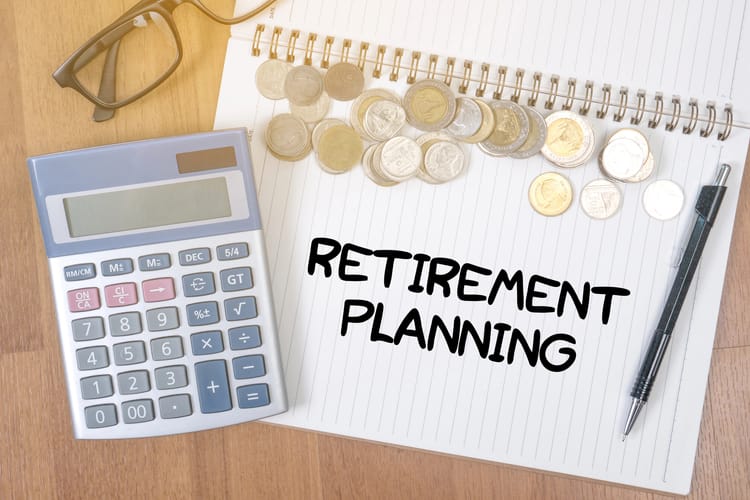Over 80% of Europeans agree that they’ll need personal savings to support themselves in retirement. Delaying the decision may feel easier, but time is the biggest factor in how much you’ll need to contribute and how much you’ll eventually have.
Why retirement planning matters
Many people put off retirement saving to deal with more immediate needs — paying off student loans, saving for a home, or raising children. But delaying retirement planning for too long can be risky. The later you start, the more effort it takes to build the savings you'll need later in life.
State pensions across the EU typically replace just a part of your former income, often under 50%. This creates pressure to build personal savings to maintain your standard of living. If you don’t plan ahead, you may not have enough to maintain your lifestyle after retirement.
Another myth is that you’ll earn more in the future and can “catch up” later. While it’s true that income often rises with age, so do expenses. These include housing, children, ageing parents, and healthcare. That’s why it’s worth asking early on when you should start saving for retirement. By the time many people begin saving seriously, the window for growth is already narrower.
Waiting too long means you may need to save much more each month, which can strain your budget later. For example, if you start saving at age 25, putting aside €200/month with a 5% annual return, you could retire at 67 with around €320,000. But if you wait until age 45, you’d need to save about €600/month to reach the same amount. That’s three times the pressure on your monthly budget for the same goal — and far less time for your savings to grow.
There’s also a belief that public pensions will always be reliable. But Europe’s population is ageing fast. By 2050, the EU’s old-age dependency ratio is projected to reach 56.7%, meaning there will be fewer than two working-age adults for every person aged 65 or older, according to Eurostat. That puts pressure on pension systems and could lead to changes in benefits or retirement age.
Early contributions stretch over time. They give your capital more room to grow without straining your monthly budget. Early saving also helps you avoid becoming dependent on limited state support. It can keep you from working longer than you’d like. It shows why is it important to start saving for retirement early: planning ahead gives you flexibility and reduces future uncertainty.

Why starting early matters and what happens if you delay
Starting earlier spreads the required savings over a longer period. This reduces monthly pressure and increases total capital potential. Compounding allows investment gains to build on previous gains. That is the advantage of investing early for retirement: exponential growth over time
For example, imagine Person A starts saving €100 per month at age 25. They invest it in a balanced portfolio, for instance, a mix of low-cost equity and bond index funds, with an average nominal return of 5% per year. By the time they reach 67, they could accumulate around €160,000. If Person B starts at age 40 with the same contribution, they end up with just over €55,000. That’s about a third as much. To match Person A’s result, Person B would need to triple their contribution.
Note: These are nominal values, not adjusted for inflation or tax. Actual outcomes may vary depending on fees, investment type, and pension product.
Inflation adds another layer of complexity. Even a steady 2% annual inflation, considered optimistic, halves purchasing power over 35 years. In more realistic scenarios (2.5-3%), the effect is stronger. In pessimistic cases, with inflation exceeding 4%, savings lose value even faster. A longer investment horizon, one of the key benefits of planning for retirement in your 20s, gives savings more time to counteract inflation.
Now, let’s look at a more ambitious target. Suppose you aim to retire with a pension pot of around €320,000. If you start at 25 and invest €200 per month at 5% annual return, that target is within reach. But delaying until 45 would require roughly €600 per month to achieve the same nominal result. And that’s before taxes or inflation are accounted for.
Note: Values are before tax. Real value reflects today’s purchasing power. Long-term inflation and taxation can reduce outcomes significantly.
You can use the retirement planning calculator to make calculations tailored to your needs.
Waiting also compresses your investment horizon. That makes it harder to recover from market downturns. It limits risk-taking and puts more pressure on your budget during peak family and career obligations.
Many late starters become overly reliant on state pensions. In some EU countries, these replace less than 50% of pre-retirement income. For those living into their 80s or 90s — increasingly common — short savings windows may leave substantial gaps.
It raises the question: When should you start saving for retirement to avoid this scenario? Finally, starting late often means added stress. You may need to contribute aggressively, cut other spending, or take investment risks you wouldn’t consider otherwise. Early savers, in contrast, can reach their targets with lower monthly effort and greater flexibility.

Age-by-age guide: What to do and when
Your strategy for saving should evolve with age. Here's how to plan for retirement in your 20s, 30s, 40s, and beyond, with practical steps at each stage to stay on track.
In your 20s: build the habit early
This is the best time to start. You may not earn much yet. But even saving €50-€100 per month builds a strong foundation. A longer saving horizon, especially if you begin in your 20s, at what age should you start saving for retirement, means that even modest contributions can grow into substantial capital.
Focus on:
- Starting now, even if it's not much;
- Opening a savings or investment account, ideally with low fees;
- Learning the basics: compound interest, long-term investing, and pension systems.
A five-year delay can significantly reduce total returns. This is especially true early in the savings journey. Planning in your 20s builds strong financial habits. It also provides a valuable time buffer for market ups and downs. Begin with automated transfers so saving becomes a routine. It should not be a monthly decision you have to revisit.
In your 30s: increase contributions and diversify
By this time, your income likely grows. With it, your capacity to save more increases too. Aim to put 10-15% of your monthly income into retirement savings.
Your focus should be to:
- Increase your monthly contributions each year, even slightly.
- Join an employer-based pension plan, if available, and contribute enough to receive full matching.
- Track your pension entitlements via government tools like PensionsInfo (Denmark), mypension.be (Belgium), or your national portal.
This is also the decade when many people start investing more seriously. Stocks, ETFs, and balanced funds become important tools. If you’re wondering what age should you start saving for retirement, this is the latest time to get serious without major catch-up pressure.
In your 40s–50s: maximise benefits and protect gains
If you're just starting now, act fast. You may need to contribute 15-20% or more of your income. If you've been saving since your 20s or 30s, now is the time to review your progress and make adjustments.
Your priorities:
- Use tax-deductible pension products such as Germany’s Riester-Rente or France’s PER.
- Diversify your investments across safer assets: real estate funds, dividend-paying stocks, and government bonds.
- Check your pension forecast and adjust your contributions accordingly.
At this stage, late starters often realise how much effort is needed to build enough capital in a short time. This phase is typically used to increase contributions. At the same time, investment risk is gradually reduced.
In your 60s and beyond: shift to preservation
Now, it’s time to protect what you’ve built. You also need to plan how you’ll use it. If you’re still working, continue contributing. If you’re wondering at what point can you stop saving for retirement, your focus should shift to withdrawal strategies and tax efficiency.
Steps to take:
- Shift to safer, income-focused assets — bonds, stable funds, cash equivalents.
- Reassess your asset allocation every few years.
- Plan your withdrawals to avoid depleting savings too early.
- Check national rules for pension withdrawals and tax treatments.
Even at 60+, it’s still worth starting to save. But to avoid pressure later in life, it’s important to think about what age you should ideally begin saving for retirement. Starting earlier makes the transition smoother. And if your savings are solid, you’ll have more freedom in deciding when and how to retire.
How much should you save monthly?
There’s no single correct number. But financial experts often recommend saving 10-20% of your gross monthly income for retirement. The exact figure depends on when you start, how much you want to spend after retiring, and what other income you’ll have, such as public pensions or rental income.
If you start in your 20s, even 10% may be enough. But if you wait until your 40s, you may need to set aside 20% or more to reach the same goal. This is why starting earlier usually results in a more manageable savings plan over time.
Let’s take a common example. Suppose you start retirement savings at 30 with €300 per month.. You invest it in a balanced portfolio, earning an average nominal return of 5% annually. On average, you continue until age 67. By retirement, you could accumulate approximately €380,000 in nominal terms, that is, before adjusting for inflation or taxes.
This figure does not account for tax deductions on contributions, potential investment taxes, or state-specific incentives. Likewise, the future real value (after 2-3% annual inflation over nearly four decades) would likely be closer to €200,000-€250,000 in today’s purchasing power.
Combined with a state pension, this level of savings may support a moderate monthly income for 20-25 years. It depends on your lifestyle, tax treatment of withdrawals, and investment performance during retirement.
This comparison highlights how starting a 401k at 30 (or, in the EU context, enrolling in an employer pension scheme or opening a personal retirement plan early) reduces the pressure later. Delaying savings even by a decade can sharply reduce your final capital, often requiring much larger monthly contributions to compensate. While the exact pension products vary across countries, the underlying principle remains the same: the earlier you begin, the more flexibility you retain.
You can also use tools to make a personal plan. Several EU-based retirement calculators, such as the one from the Irish Pensions Authority, allow you to input your age, income, target pension, and investment assumptions. These tools illustrate the amount you need to save each month to achieve your goals. That makes a plan for retirement in your 20s much clearer.
Of course, life is unpredictable. If 10% feels out of reach, even modest, consistent savings, like €100 per month, can grow into substantial support over time. Starting with a feasible amount and adjusting contributions later is often more effective than delaying.
At Quanloop, we offer a flexible way to begin your investment journey with small monthly contributions. You can increase your deposits over time as your financial situation evolves, all while benefiting from compound growth from day one. This makes it easier to build the habit of saving without needing to commit large sums upfront.
And don’t forget tax incentives. Many EU countries allow deductions for retirement contributions. This makes it easier to save more. Some plans even offer state bonuses or employer matching. These act as free money for your future. Not taking advantage of such benefits is like leaving income on the table.
Finally, be flexible. Your saving needs will shift over time. They depend on your goals, lifestyle, and changes in pension systems. The best approach is to review your progress every few years. Use a calculator or pension forecast tool and adjust your contributions as needed.
If you’re still wondering what age should you start saving for retirement or why is it important to save for retirement early, remember this: consistent action beats perfect timing. Give your contributions time to compound into long-term capital.
Summary
The question isn’t just when to start saving for retirement. It’s how early you can take action. A head start in your 20s means greater long-term potential. It also means less financial stress down the line. Waiting until your 40s or 50s is still possible, but it comes with added pressure and fewer options.
Consider your long-term retirement needs. Make regular short-term adjustments. Build a habit of saving. Increase contributions as your income grows. Use tools like retirement calculators and pension portals to stay informed. Regardless of when you begin, steady action will shape a more secure retirement.
Begin with a realistic monthly amount. Review it regularly. Adjust as your financial situation evolves. A consistent savings strategy increases the likelihood of financial stability after retirement.
Frequently Asked Questions
What's compound interest and how does it work?
Compound interest is when the interest you earn on your savings also earns interest over time. So, the longer you save, the more interest you earn. This means that your money can grow faster over time, even if you don't add any more money to your savings.
What is the safest way to save money for retirement?
The safest way to save money for retirement is to invest in low-risk investment options such as a saving account, for example. These types of investments provide a stable and predictable return on your investment, making them less risky than stocks or other more volatile investments. Another safe option for retirement savings is to contribute to a tax-advantaged retirement account, such as a 401(k) or Individual Retirement Account (IRA). These types of accounts provide tax benefits and can help your retirement savings grow faster than if you were to invest in a regular taxable account.
How much of your salary should you put toward retirement, why?
The amount of your salary that you should put toward retirement depends on several factors, such as your age, income, retirement goals, and current savings. As a general rule of thumb, financial experts suggest saving at least 10-15% of your salary for retirement. This is because retirement can be a long and expensive journey, and you'll need to have a significant amount of savings to support your lifestyle in retirement. By saving a portion of your income, you can take advantage of compound interest and grow your retirement savings over time. It's important to note that the earlier you start saving for retirement, the less you'll need to save each year.
Is it better to save for retirement early or later?
It is generally better to start saving for retirement as early as possible. The earlier you start saving, the more time your money has to grow and compound over time. By starting early, you can take advantage of the power of compound interest, which allows your money to earn interest on top of interest over time.
Waiting until later in life to start saving for retirement can make it more difficult to achieve your retirement goals. If you wait too long, you may need to save more aggressively to make up for lost time, and you may have to take on more risk to achieve the returns you need.
List of References
- Source: ecb.europa.eu
- Source: oecd.org
- Source: investor.vanguard.com
- Source: pensionsauthority.ie
- Source: expat.hsbc.com





